Introduction
In these times, where the use of renewable energies is of utmost importance, the proposals that arise regarding this, must be considered very seriously since our future could depend on it, and that of our spacecraft: "Planet Earth" .
One of the most popular proposals is that of solar panels, however systems based on these panels have several drawbacks:
1) Although the price has decreased, the cost of solar panels is still high
2) The efficiency is very low
3) Energy storage is through battery systems or recently super capacitors, which makes systems based on solar panels much more expensive.
4) On rainy and cloudy days and at night the solar panels are totally inefficient.
But what if we can design a system that is capable of storing solar energy for indefinite periods of time?
Well that is my proposal, a mechanical system based on a simple machine such as the belt and pulley system.
Principle of operation
It is well known to many that energy is neither created nor destroyed, but transformed.
Considering this principle we can then take part of that energy produced by solar panels, or some other source of electrical energy and transform it, let's say, into Potential Energy.
The concept is very simple, if we take a mass m (Kg) and raise it to a height h (mts), then we will have a value of Potential Energy Ep = m * g * h, where m is the mass in Kg, g is the acceleration of gravity, and h is the height in meters at which the mass is.
The way we are going to raise and lower that mass is through a system of pulleys and belts.
Now, a pulley is a wheel on an axle or shaft designed to support movement and change direction of a belt or taut cable.
In a belt and pulley system, a belt runs along a pulley’s groove so that the power can be transfer either from one pulley to another or from the pulley directly to the application that requires power.
A pulley design to attain different diameter functions as it’s used to increase or decrease the speed of the application of its powers.
A belt drive is a loop of a flexible material that transfers movement from one rotating pulley to another. Each are held on a shaft.
The primary function of a belt is to transfer power (rotary energy) from one source to another. Whereas pulley that has a groove around its circumference allows a belt to smoothly through it when transmitting rotational motion.
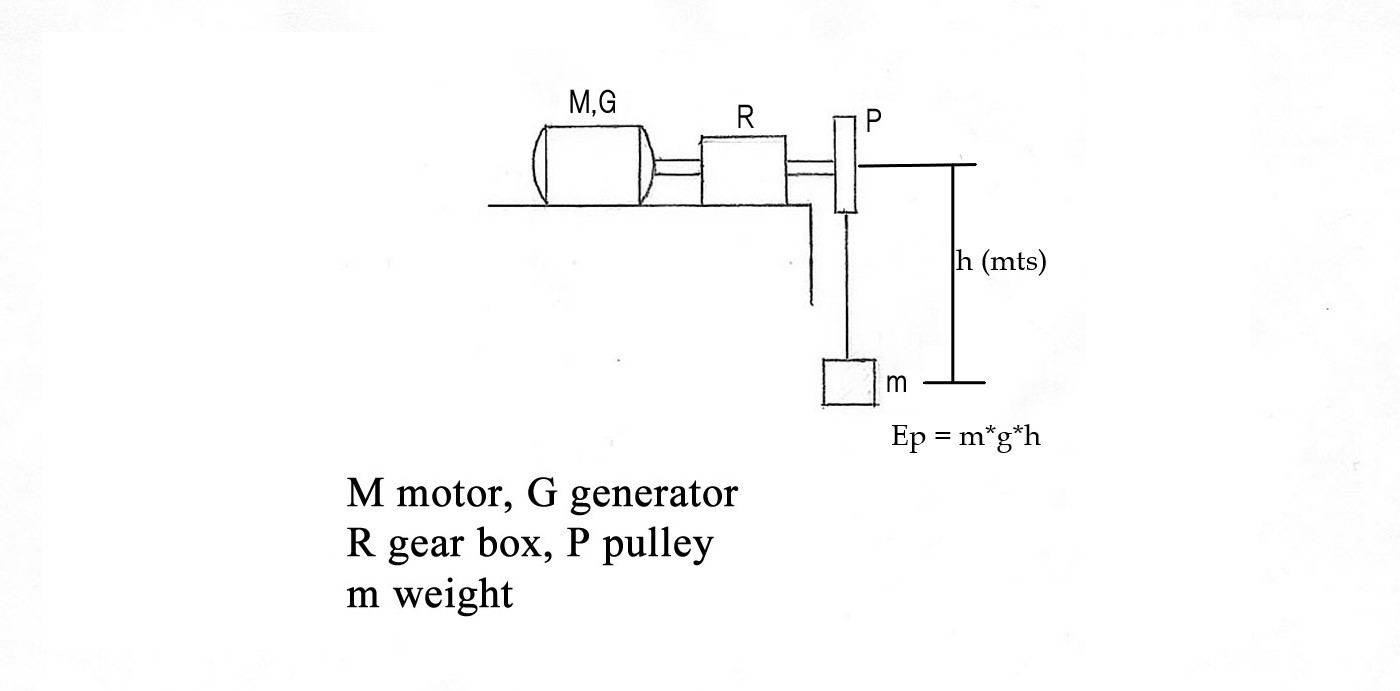
Figure No. 1 shows the general operation of the system:
During the day, on sunny days, the energy produced by the solar panels or another form of energy, causes the motor M to start and begin to raise the mass m to the height h, in the absence of sunlight or at night, the mass m, due to the action of gravity, begins to fall and the motor now behaves like a generator (G), providing the required electricity.
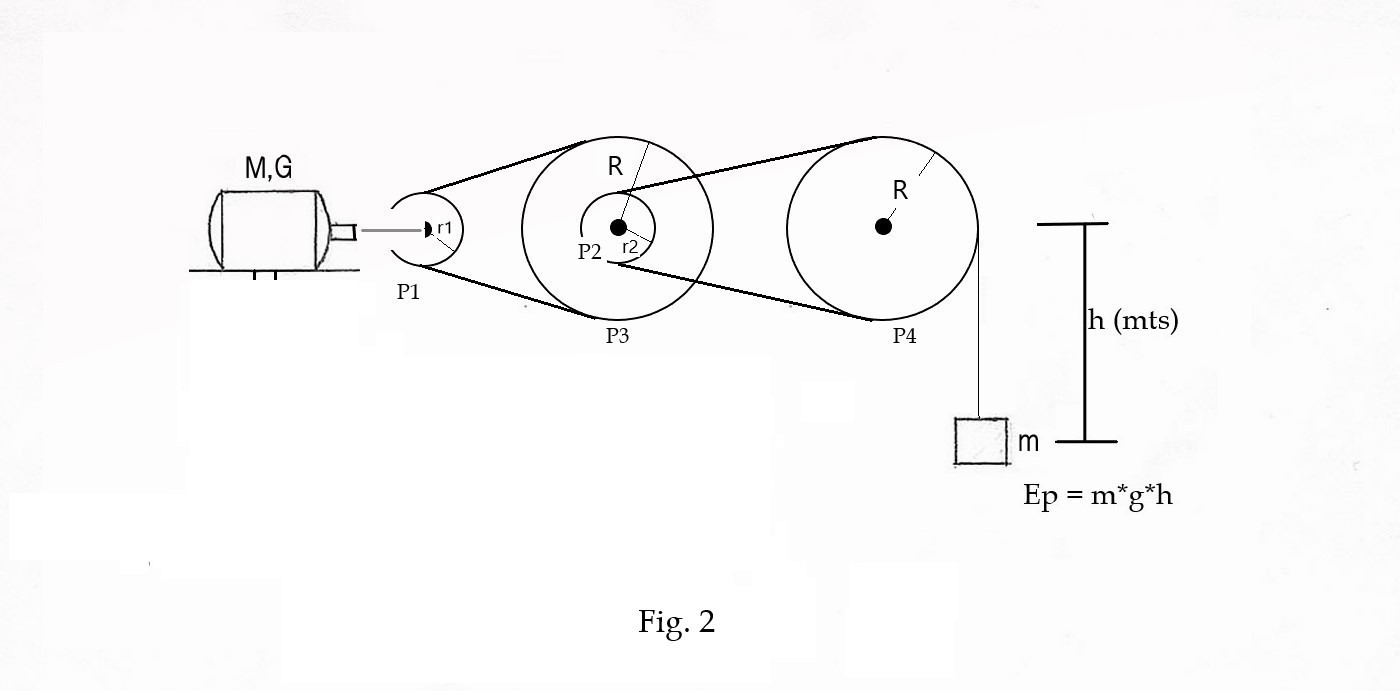
To be able to lift the mass m without problem we resort to a system of pulleys and belts like the one shown in figure 2.
One of the interesting characteristics of pulley and belt systems is that we can lift large loads with little effort.
In the figure shown we can see that the relationship between the radius of the pulley that is on the motor shaft and the radius of the following pulley is:
K1 = R / r1, where K1 is the ratio factor between pulleys P1 and P3, R is the radius of pulley P3 and r1 is the radius of pulley P1.
Similarly, the ratio factor (K2) between pulleys P2 and P4 is:
K2 = R / r2, where R is the radius of pulley P4 and r2 is the radius of pulley P2
For the proposed system:
r1 = 5 cm, r2 = 3 cm, and R = 10 cm
so, K1 = R / r1 = 10/5 = 2; K1 = 2
This means that, for the pulley P3 of a complete turn, the pulley P1 of two turns is required.
Now, we also have: K2 = R / r2 = 10/3 = 3.33, which means that for the pulley P4 to make a complete turn, it is required that the pulley P2 must make 3 1/3 turns
The total ratio factor of the entire pulley system is:
K = K1 * K2 = 2 * 3.33 = 6.66, that is to say that for the pulley P4 of a complete turn, 6.66 turns of the pulley P1...
 César Castillo Andrade
César Castillo Andrade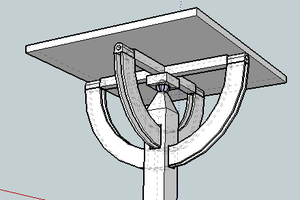
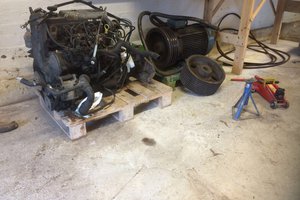
 Jesse Tolvanen
Jesse Tolvanen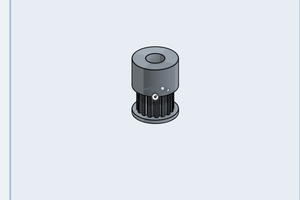
 Michael Sinitsin
Michael Sinitsin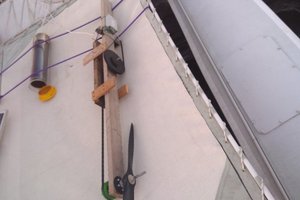
 sean d'epagnier
sean d'epagnier